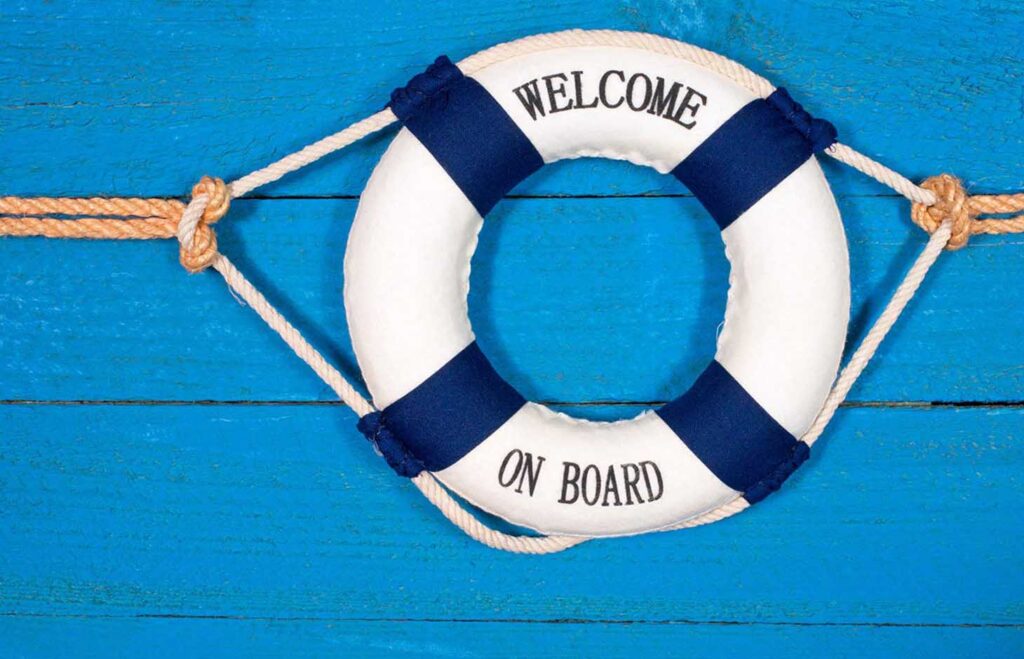There’s no question that first impressions are important, especially in business. How much more important, then, is the impression a customer gets once they’ve made their first payment and activated your product?
Very, apparently.
A study by Price Intelligently found that a 1% increase in acquisition translates to a 3% improvement in your bottom line. The same increase in retention translates to an improvement of 7%.
That’s more than twice as much percentage points!
While signing new customers is obviously key to business growth, retaining those customers is just as (if not more) important.
What keeps customers around? One big factor stands out: effective onboarding. Entrepreneur and four-time company founder David Skok named “failure to successfully onboard the customer” as one of the top two causes of SaaS customer churn.
Nailing the onboarding process, especially for a product that may be constantly evolving with technology and customer needs, can sound daunting. But it can’t be ignored. Onboarding that isn’t optimized to increase retention costs you both the customers who churn, as well as the potential customers warned away through reviews and word-of-mouth.
Here’s how to avoid that problem.
1. Make sure you’re getting the right customers
Before onboarding even begins, your business must attract customers who need what you offer. No onboarding process can rescue a customer hoping to burn CDs with a Spotify account.
Don’t put yourself in that position. Be sure that marketing and sales understand what your product does, and doesn’t, offer. Use customer cohorts to identify good and bad fits. Letting bad-fit customers through the door simply to raise acquisition will cost more than they spend. High churn rates and bad reviews quickly erode revenue gained in these situations.
Once you’ve got the right customers, optimizing your customer onboarding process becomes all about communication. Center your customers in your efforts, and you’ll find that they’re eager to enjoy your product, share it with their colleagues, and even help make it better.
Let’s discuss how.
2. Reinforce customer choice by highlighting your best features
People experience a range of emotions as they first hear about, research, and decide to invest in your product. Throughout this journey, it’s important to reinforce their interest, especially in those moments after the purchase.
Many digital companies accomplish this through a virtual “tour” of their features once an account is activated. These tours highlight the most exciting product offerings, and often help the user set up their account.
G Suite, the Google business platform that offers advanced features for a fee, takes new users on a virtual tour of Gmail and then leaves this toolbar at the bottom of their inbox until account setup is complete (or a user chooses to click the “x” that removes the bar).

Note that the tour of Gmail is still available if needed. This is especially helpful for users who may not have time/interest in a “tour” immediately at activation and need to come back later.
This progress tracking also helps new users see that they haven’t yet unlocked all of the product’s capabilities. It ensures product stickiness by encouraging customers to stick around, try things out, and grow attached.
Show your customers your best side, reminding them why they signed up, and they’ll be more likely to experience early success and remain loyal to your product.
3. Optimize communications and welcome emails
Another way to highlight your value for customers is to remind them with each communication. Put your best features on the tops of landing pages, welcome emails, and throughout the setup process so that users remember why they signed up.
Don’t underestimate the power of solid welcome emails. Magoosh, an online test prep service, ran an A/B test where they sent welcome emails to only half of their new free account users. Guess which half was 17% more likely to upgrade to paid accounts in two weeks?
You guessed it: the ones who received the email.
A/B testing is something MailChimp encourages for your welcome email subject lines, as well. By shaping communication around data, you increase your chances of success.
Lincoln Murphy of marketing, sales, and customer success site Sixteen Ventures agrees.
“First and foremost, the welcome email must be built off of best practices,” he explains in an article on the topic. He then delves into the well-defined process, CTA, and app links that should be included in the ideal SaaS welcome email.
A robust subscription billing platform can automate the welcome email process. Take the time to make your communications and welcome email shine, and watch user activity rise.
4. Ensure and celebrate early success
There is a direct correlation between customer retention and the time between acquisition and their first “wow!” moment.
A “wow!” moment is what happens when a customer sees your product delivering results. It’s an affirmation that their purchase was the right choice. If you can ensure an early “wow!” moment, and celebrate it with customers, their satisfaction smooths the onboarding process.
Stock investment app Robinhood offers a free stock to new users who sign up. This ensures that new users experience success (owning stock) immediately upon activation. What’s more, this offering is available in the free version of Robinhood.
This positive experience increases the chances that customers will enjoy using the app and perhaps even upgrade to a paid membership for more features as they continue to invest.
While offering free stock may not be something your business can offer, consider what you can provide. Even a special celebratory email once a user has first successfully used the product can go a long way.
Share in customer success, and they’ll keep coming back for more.
5. Educational content and thoughtful upsells
Your customers have been through an initial tour, guided through account setup, received a welcome email, and experienced their first success. They’re hopefully fairly convinced of your product’s value, ease of use, and effectiveness. What happens next?
For many users, this is the point where exploration of advanced features begins. Once a new customer has mastered the basics and seen results, there is a natural inclination to see just how far they can take their success.
This is where educational content comes into play.
Slack has an entire YouTube playlist dedicated to videos on how to get started with their platform, with additional playlists for advanced features and applications once a team has gotten the hang of things. Combine educational content with strong and responsive customer support, and users will be so informed they won’t leave for lack of understanding.
It can be tempting at this phase to get pushy with upsells, but don’t overdo it. Making customers aware of the advanced features found in premium accounts can be done without coming across as forceful. If customers need the features, their comfort with your product and their success thus far will be all it takes to convince them to upgrade.
6. Getting feedback
We’ve focused a lot on how you communicate with the customer upon activation, but are you making room for them to respond?
In an ideal world, personalized or concierge onboarding would be available to every customer. That’s not always possible. The next best thing, of course, is having channels that allow you to see customer pain points during the onboarding process, or even invite them to tell you themselves.
Through A/B testing and tracking, you can gain a window into customer needs, locating areas of improvement in onboarding and the ongoing customer experience.
You can also employ forums, surveys, or even an “open door email policy” to allow customers to directly suggest areas of growth.
After learning that Amazon’s CEO Jeff Bezos actually reads (or has close team members read) customer queries, one Quora user reported that his suggestion to improve the design of an Amazon shopping app resulted in a fix in just three days.
Very impressive!
This kind of responsiveness builds trust and connection with customers. By encouraging feedback and building upon it, you not only solve customer issues, but build a better product for new customers coming in.
Make this a part of your onboarding and continued customer experience, and your users are likely to stick around for the business that listens to their needs.
By identifying your best-fit customers and enhancing your communications with them, you can optimize the customer onboarding process and reduce early churn. Use a combination of tools and practices that works best for your business and watch retention levels, and revenue, grow.








